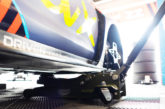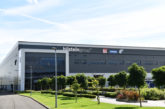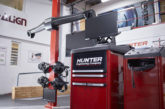
Christian Wolf, product marketing manager for bulbs at Bosch, discusses the central role Bosch has played in lighting development.
At Bosch, we’ve always been at the forefront of lighting technology – right from when we developed the first electrical lighting system for automotive vehicles in 1913. In 1960, we introduced the high-beam and low-beam headlamps with integrated fog light and asymmetric light distribution, a move that would make driving in difficult conditions much safer. Then, in 1991, we released the first Xenon headlamp system with 2.5 times more luminous efficacy than standard halogen headlamps.
Today, our bulb products range from classic front light replacements to more high performance options. Beyond that, our portfolio of bulbs cover almost every part of a modern vehicle – from license plate lights to dashboards lights – and there are over 30 of them! There are three different technologies behind our range:
1. Halogen: The standard bulb technology, used in vehicles for the last 50 years. As the electric current is passed through the tungsten wire filament, the filament heats up and glows, producing light. Halogen is also the leading bulb technology in the automotive aftermarket, as it’s cheapest andeasiest to replace.
2. Xenon/HID: A technology with a much higher intensity discharge and brighter output. When an electric current is applied, the highly-pressurised xenon gas within ionizes between the electrodes, creating a ‘light bow’. The lower energy consumption (35W as opposed to the 55W required by halogen types), coupled with its more advanced technology, allows it to last 2,000 hours or more, four times halogen.
3. LED: A superior lighting technology, LED produces a much more powerful beam than its halogen counterpart. The electric current passes through a tiny chip, in turn lighting many tiny light sources. LED is the leading technology being developed by vehicle manufacturers for use in their newer vehicles on the road today. LED can also be programmed to change colour/brightness.
Do different bulb options affect the driver’s experience? Absolutely. Drivers may not realise this, but the best bulb for their vehicle depends very much on their individual circumstances. For the regular night drivers, a brighter bulb will improve road visibility on dark journeys, while more frequent travellers may prefer a bulb with a longer lifespan.

This is where Bosch’s extensive range comes into its own, with an array of benefits that will fit the driver’s criteria. By adapting the precise mechanics inside the bulb, we can flex bulb types to suit different situations. Using a standard bulb – which provides up to 600 hours of light – as our starting point, we develop products with different specialisms. We may modify the tungsten wire to achieve different results, while the blue ring coating on our Plus range enhances the light colour and whiteness for maximum light performance and reach on the roads. It is worth bearing in mind that by making improvements to one area, you will have to compromise others. For example, for a longer bulb life we may use more robust materials to create the bulb, which will in turn affect the brightness levels.
So what does the future hold? Well, in the automotive aftermarket, the exciting developments of the future are counterbalanced by the fact we regularly deal with older cars. Bosch currently develops a wide range of LED products, which will make it possible to retrofit newer technology in older cars.
That’s why it’s essential to ensure the vehicle’s bulbs are not just high quality, but that they work well with a wide range of vehicle ages. As people have their car for longer nowadays, there is more demand for replacement bulbs.
The Plus 200 Gigalight
Bosch’s newest bulb is the Plus 200 Gigalight, the most powerful and intensive halogen bulb in the range. Its light beam reaches up to 150 metres on the road and with the blue ring coating on the bulb, it provides a pure bright white light, emitting a much higher output than standard bulbs.









